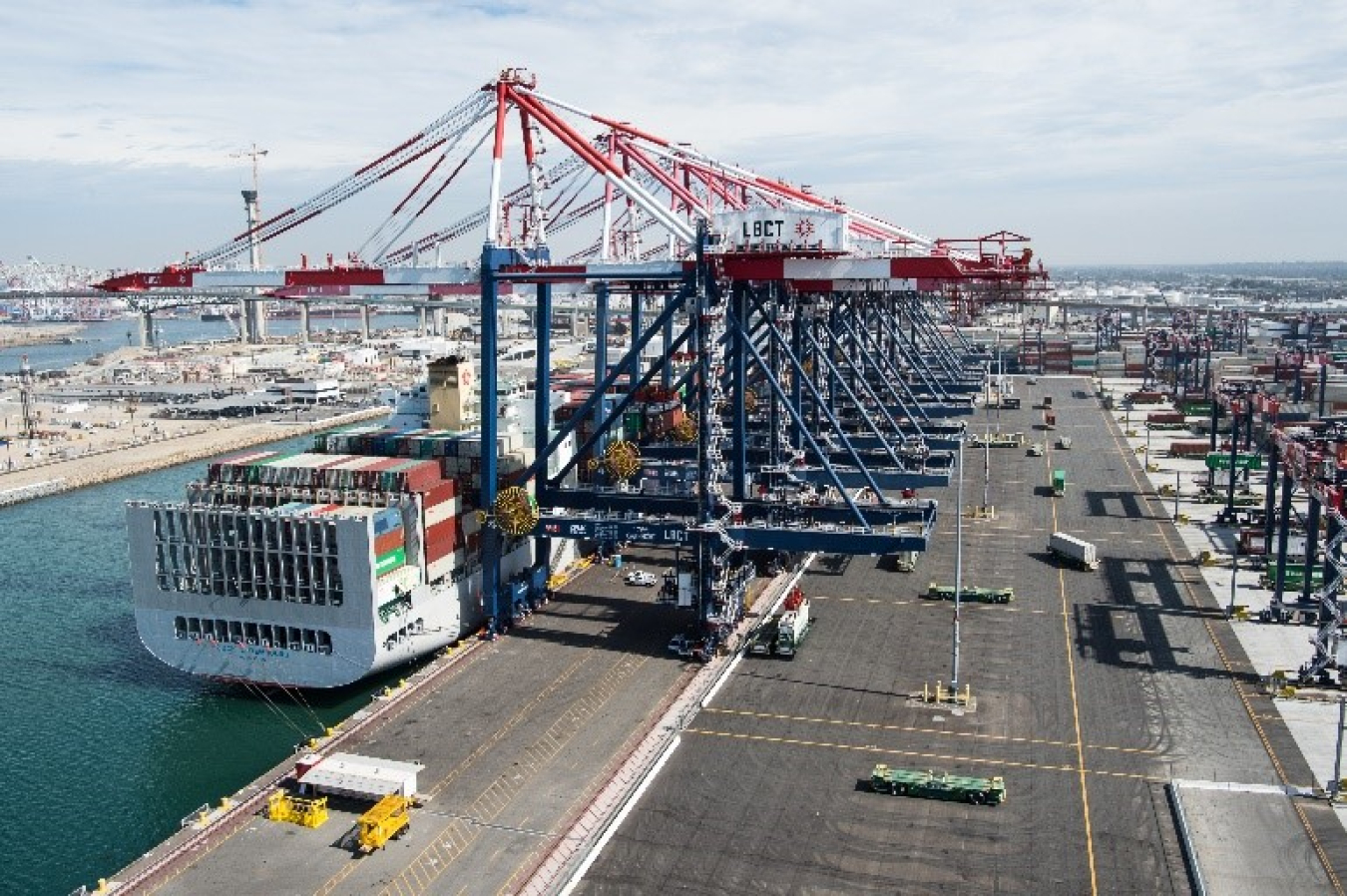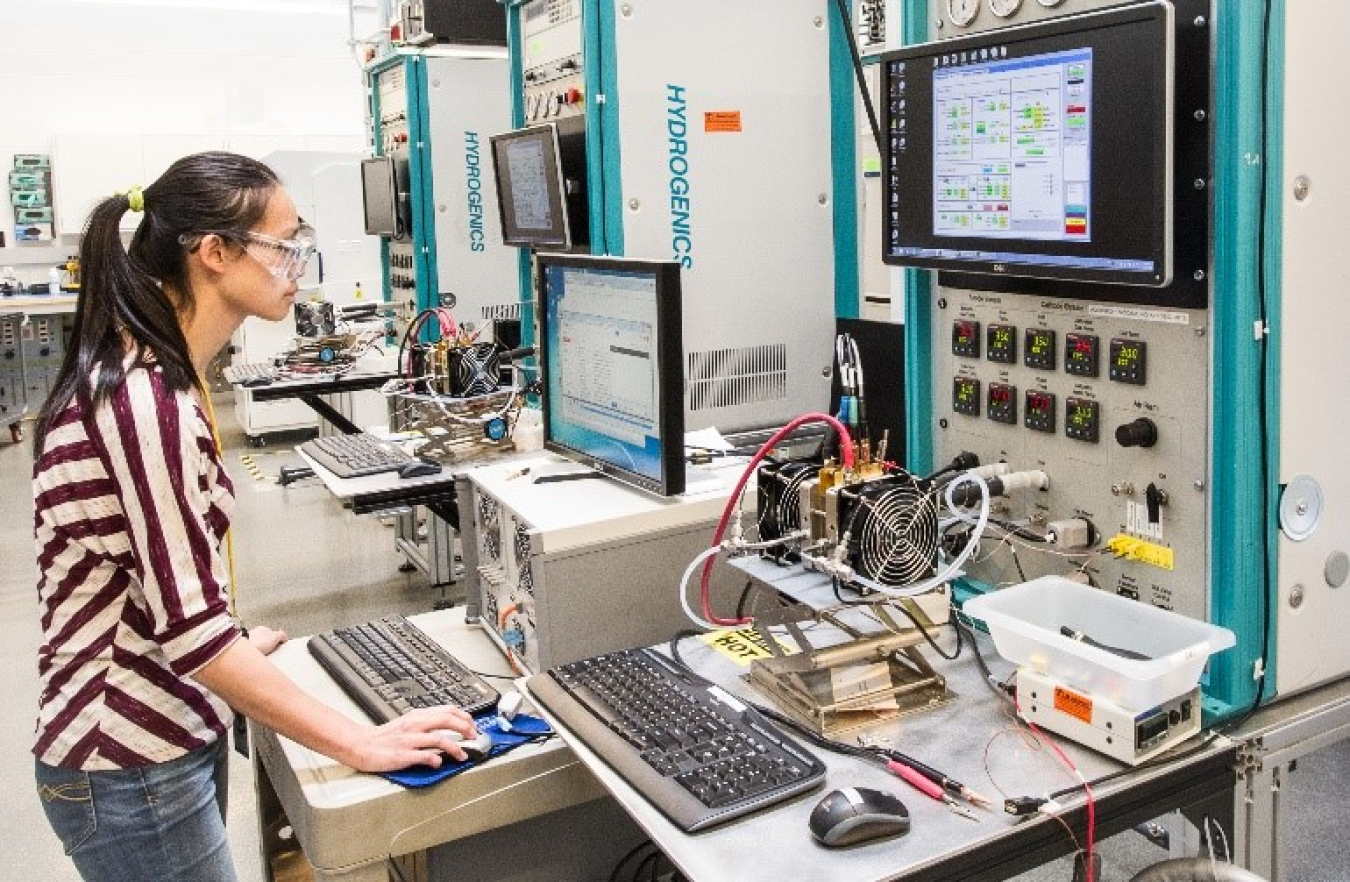10 Things You Might Not Know About Hydrogen and Fuel Cells
Office of Energy Efficiency & Renewable Energy
October 8, 2019Brush up on your hydrogen and fuel cell knowledge! In celebration of Hydrogen and Fuel Cell Day on October 8, here are 10 fun facts about hydrogen and fuel cell technologies and 8 resources to help you learn more.
1. Hydrogen is the simplest and most abundant element in the universe, but it rarely exists as a gas on Earth—it must be separated from other elements. Hydrogen can be produced from diverse, domestic resources, including fossil fuels, nuclear energy, biomass, and other renewable energy sources such as solar, wind, and geothermal, using a wide range of processes. One of these processes is called electrolysis, which splits water into hydrogen and oxygen using electricity from multiple energy resources.

2. More than 10 million metric tons of hydrogen are produced annually in the United States. Most of the hydrogen produced in the United States comes from a process called steam methane reforming. Two of the largest users for this hydrogen are the petroleum refining and fertilizer production industries. There are currently 1,600 miles of hydrogen pipeline in the United States and there are large hydrogen production facilities in almost every state.

3. Hydrogen can connect various sectors of the economy. For example, producing hydrogen when generation exceeds load on the grid can reduce curtailment of renewables and optimize existing baseload plants, such as nuclear. The hydrogen can be stored, distributed, and used as a feedstock for transportation (trucks, rail, marine, etc.), stationary power, process or building heat, and industrial and manufacturing sectors (such as steel manufacturing), creating an additional revenue stream and increased economic value. DOE’s H2@Scale initiative is tapping into hydrogen’s potential to unlock these opportunities.

4. Fuel cells generate electricity through an electrochemical reaction and can use different fuels. When using hydrogen as the fuel, they emit only water and heat. As long as there is a constant source of fuel and oxygen, fuel cells will continue to generate power.

5. Fuel cells can be grid independent. Over 300,000 stationary fuel cell systems exist worldwide. Over 500 MWs of fuel cell power serves more than 40 states in the United States. These systems provide non-stop power for critical load functions such as data centers, telecommunications towers, hospitals, emergency response systems, and even military applications for national defense.

6. There are more than 35,000 hydrogen fuel cell forklifts in use across the United States and over 20 million hydrogen refuelings have supported their operation. Fuel cell forklifts are in use now in warehouses, stores, and manufacturing facilities throughout the United States. Hydrogen-powered forklifts offer refueling in minutes, increased performance, and zero emissions for use within warehouses and buildings.

7. More than 60 hydrogen fuel cell buses are providing transit service in the United States. These buses are already running in various states including California, Massachusetts, Michigan, and Ohio. One of these fuel cell buses has surpassed 32,000 hours of drive time and twelve buses have exceeded 20,000 hours without major repairs or replacement of the fuel cell stack. This is comparable to the life expectancy of a diesel engine in a transit bus.

8. More than 45 hydrogen stations support the more than 8,800 fuel cell cars that are on the road in the United States. Of these, 42 are retail stations located in California where customers can drive up, fuel, and pay just like at a gasoline station. Other states with hydrogen stations include Connecticut, Hawaii, Massachusetts, and South Carolina.

9. There is increasing interest in hydrogen and fuel cells from the rail, truck, and maritime sectors. This is shown through the rollout of the first hydrogen fuel cell train and hydrogen-powered boat. In addition, fuel cell delivery and parcel trucks are starting to deliver in California and New York, the world’s first fuel cell for marine ports was installed in Hawaii, and a heavy-duty fuel cell drayage truck demonstration is underway at the Port of Long Beach.

10. Fuel cell cost has decreased by 60% since 2006. Many of these cost reductions have come from DOE-funded research and development of catalysts and durable membrane electrode assemblies, as well as increased electrode performance. Fuel cell durability has also increased by a factor of 4 since 2006, and is now equivalent to 120,000 miles.

8 Ways to Learn More
- Subscribe to email updates from the Hydrogen and Fuel Cell Technologies Office to stay up to date on hydrogen and fuel cell news and funding opportunities.
- Explore hydrogen and fuel cell industry related jobs through the Hydrogen and Fuel Cells Career Map.
- Increase your H2IQ by checking out fact sheets and other introductory resources.
- Find a hydrogen station using the Alternative Fuels Data Center’s alternative fueling station locator.
- Learn about safe handling and use of hydrogen through the Hydrogen Tools Portal.
- Browse our fuel cells glossary to understand the vocabulary of hydrogen and fuel cell technologies.
- Watch the Energy 101: Fuel Cell Technology video to learn about the fundamentals of fuel cell technology.
- Learn how DOE’s EERE Hydrogen and Fuel Cell Technologies Office efforts are improving affordability, reliability, and performance of hydrogen technologies.

